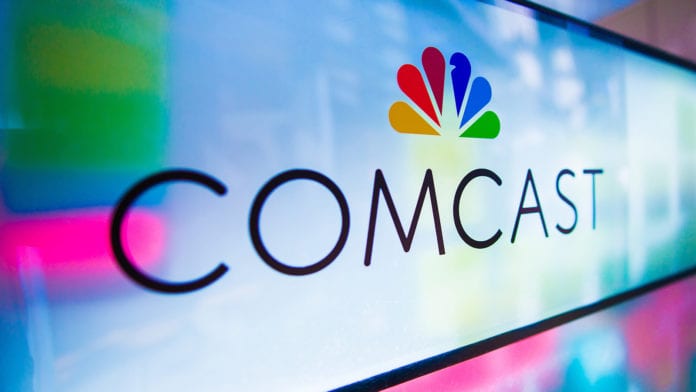Samsung is delivering CBRS and 600 MHz equipment that will help Comcast expand its capacity and coverage in select areas
Comcast announced that Samsung Electronics is providing it with 5G Radio Access Network equipment that will be used to boost 5G connectivity for Xfinity Mobile and Comcast Business Mobile customers in its service areas across the country.
Under the terms of the deal, Samsung will supply 5G RAN solutions for Comcast’s efforts to deliver 5G access to consumer and business customers in the United States using Citizens Broadband Radio Service (CBRS) and 600 MHz spectrum.
Samsung 5G RAN products to be provided include radios for CBRS and 600MHz, baseband units and a newly developed 5G CBRS strand small cell that can be deployed on Comcast’s aerial cable lines. Using small cell product, cable operators can more easily provide 5G cellular connectivity by leveraging their existing DOCSIS infrastructure without having to build or acquire additional cell sites, the vendor said.
“Our capital-light approach to providing enhanced 5G connectivity in service areas where we have a high concentration of traffic and cable infrastructure is smart for our business and even better for customers who will benefit from broader coverage and industry-leading speeds and prices,” said Tom Nagel, SVP of wireless strategy at Comcast.
Comcast noted that its mid-band (CBRS) and low-band (600 MHz) spectrum enable the company to supplement its existing Xfinity Wi-Fi network and cellular network partnership with additional 5G coverage in certain high-traffic areas within its service areas. Comcast and Samsung are conducting field trials of their new 5G network solution and are currently expanding these trials to include Comcast employee testing.
“While our existing mobile connections continue to deliver as planned, several years ago we began acquiring new wireless spectrum licenses, both in the CBRS (3.5 GHz) and 600 MHz frequencies, to add a third layer to our wireless network strategy. By coupling CBRS spectrum, which provides localized network capacity, with the low-band 600 MHz spectrum, which provides broad wireless coverage, we plan to efficiently deliver new 5G services that both improve our customer’s experience and lower our overall service costs,” Nagel said in a blog post.
“We have no plans to build out a full national wireless network, rather, where it makes sense, we plan to selectively deploy our own 5G radios in dense, high-traffic areas of the markets we serve today. Our current spectrum holdings cover roughly 80 percent of Comcast’s homes passed and around 50 percent of the U.S. population, and those are the areas where we’ll focus,” the executive added.
Earlier this month, Comcast announced that it is in the midst of a major network upgrade that includes plans to offer multi-gigabit symmetrical speeds and Wi-Fi 6 to customers starting next year.
The cable provider said that it is “finalizing” its transition to a virtualized, cloud-based network architecture and at the same time implementing a network architectural update that will boost its upload and download capacity. It said it is also “completing the core technical foundation for 10G” that is says “will deliver multi-gig symmetrical speeds over the connections already installed in tens of millions of homes and businesses.” Comcast says that it will start offering 10G-enabled multi-gig symmetrical services in 2023.

